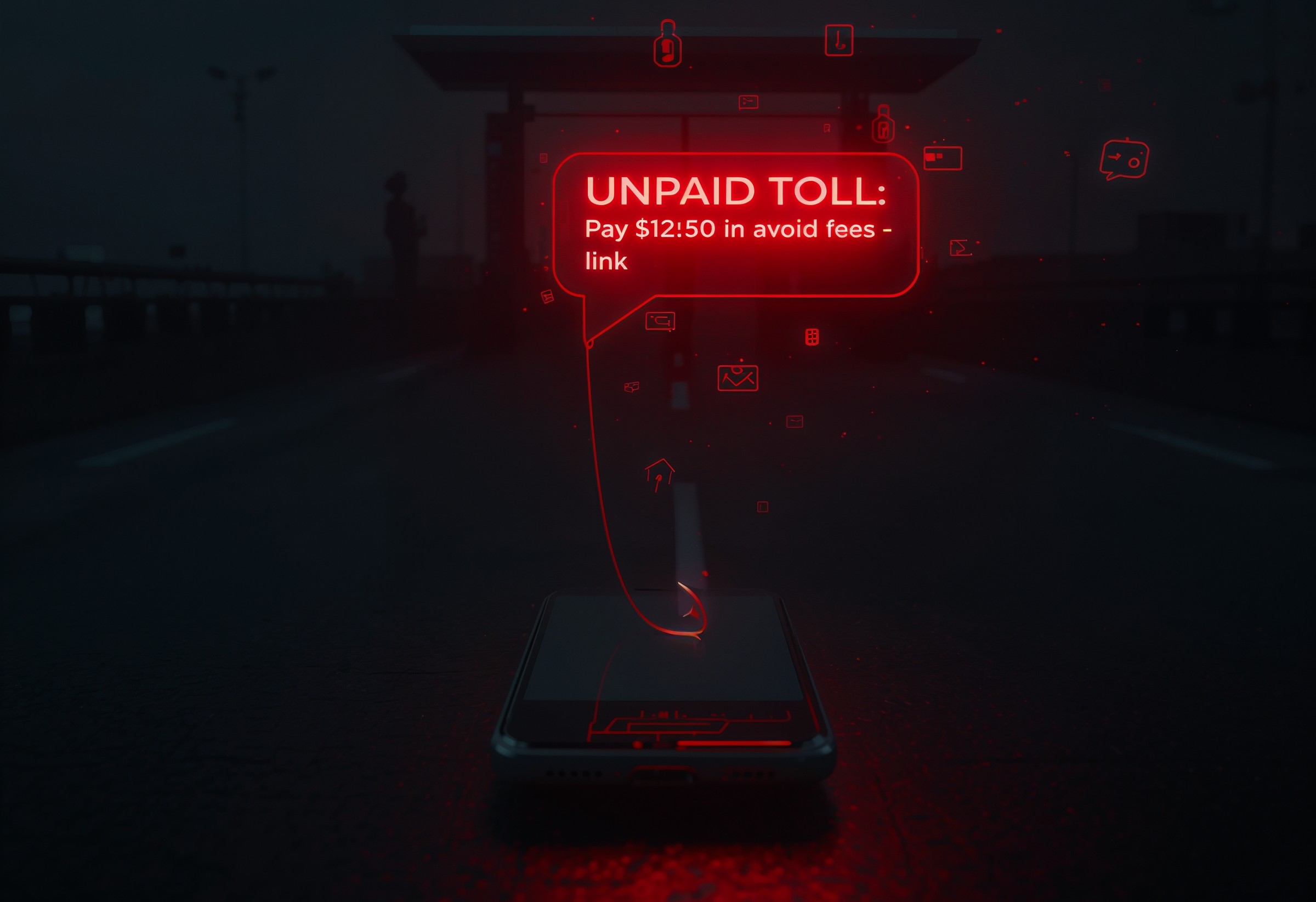When a text flashes on your phone claiming you owe a toll for a road you didn’t drive, your first reaction might be annoyance. Yet, when that message arrives at scale, and hundreds of thousands of people receive it each day, you’re facing a major mobile-fraud campaign. Security analysts now link those alerts to a syndicate known as the Smishing Triad, a China-based network that has turned toll-agency impersonation into a high-volume revenue stream.
Why toll notifications are the perfect smishing vector
Drivers are accustomed to receiving notifications about toll charges and late fees. Criminals exploit that expectation by spoofing sender IDs and manipulating domain names to mimic state agencies or toll-road communications. The Smishing Triad recognised that users trust SMS far more readily than email so they shifted their tactics accordingly. According to researchers, “People tend to be more trusting of these devices. they’re less discerning about texts than emails.”
Structure and scale of the Smishing Triad campaign
Since early 2024, the Smishing Triad is tied to the registration of well over 100 000 domains designed for fraudulent toll-related phishing. Analysts identified domains such as “virginia-govy[.]icu” or “ohio-govae[.]top” used to impersonate DMV or toll-services agencies. These domains rotate rapidly: once detected, the group drops them in days. Their infrastructure is built for high volume and short lifespan.
Tactics and technical vectors
-
Spoofed SMS or iMessage sender IDs that appear official.
-
Links pointing to near-lookalike websites requesting payment or input of credentials and credit-card data.
-
Use of top-level domains like “.icu”, “.top”, or “.vip” to host the landing pages.
-
Bulk SMS services and message-gateway rentals enabling thousands of texts per minute.
-
Targeted spoofing of toll services (e.g., E-ZPass, FasTrak) and state-level agencies to maximise legitimacy.
Why it’s so hard to stop
Traditional network filters struggle when attackers use RCS or iMessage, which run over data networks rather than legacy SMS streams. In addition, blocking sender IDs remains an arms race: the Smishing Triad simply spins up new ones. They also exploit legitimate-looking URL structures (“state-toll-pay[.]xyz”) and rotate hosting quickly to avoid takedowns.
Impact and risk to users and organisations
For individuals, the risk begins with clicking a link and escalates into credential theft, card provisioning to digital wallets, identity theft or direct financial loss. For organisations, especially toll-collection agencies and mobile carriers, the reputational and operational risk is significant: consumer trust erodes when scams appear indistinguishable from legitimate comms.
Three practical steps
-
Educate users: Emphasise that legitimate toll-services will not send payment requests via unsolicited text links.
-
Deploy filtering: Use SMS- and RCS-aware spam filters, block suspicious domains, and monitor for high-volume bulk text flows.
-
Coordinate with carriers & agencies: Carriers must share threat intelligence on sender ID anomalies, and toll agencies should publish official payment channels clearly.
What this means for cybersecurity professionals
As mobile-based attacks like this proliferate, your security strategy must expand beyond email. Text messages, especially those impersonating routine services like tolls, are now an active threat channel. Focus on mobile-device hygiene, bulk-SMS threat hunting and domain-registration surveillance to stay ahead.
The Smishing Triad campaign shows how threat actors rapidly pivoted to mobile vectors impersonating everyday services such as toll-road notifications to trick users into payment or data disclosure. Organisations must treat bulk SMS fraud with the same intensity as email phishing. Meanwhile, individuals must pause, verify and never act on panic-driven text messages demanding payment.










